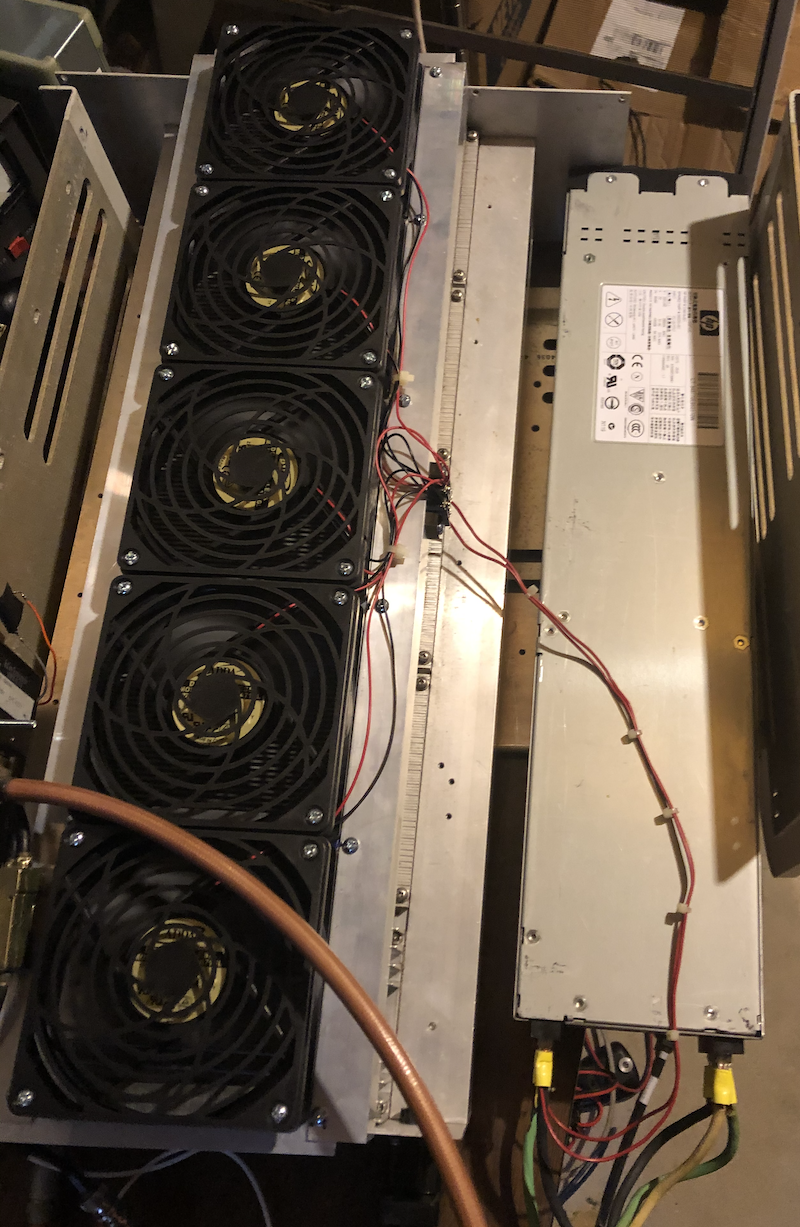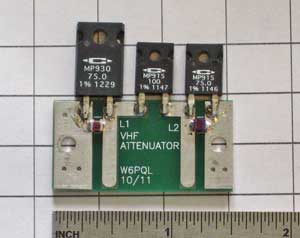The latest project at radio station N1OFZ is the integration of a Harris TV amplifier. There are many sites that already cover how to do get it up and running so I’m just going to go over the things that I did that may be a little different.
I like others added additional cooling to the amp. This was done by adding five 48 volt fans. They were mounted to pieces of aluminum angle iron and fit perfectly atop the heat sinks.
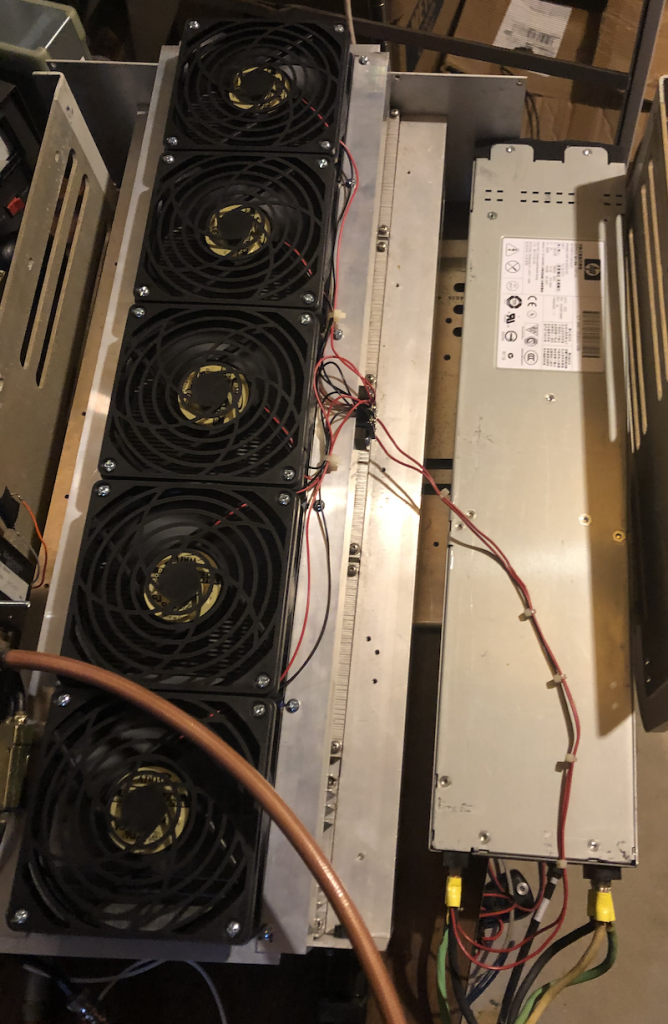
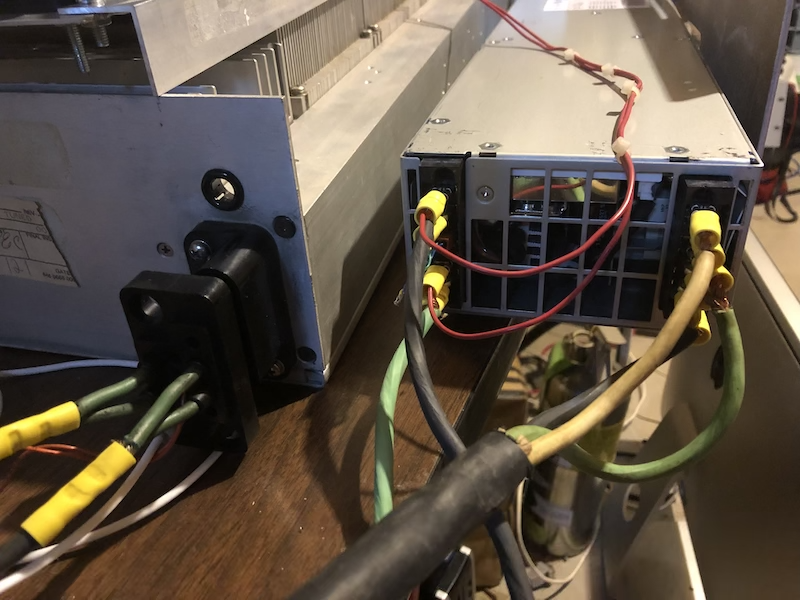
Another thing I decided to do was to keep the amp as modular and easy to swap out components as possible. Therefore on the HP server power supply I attached the 240 VAC and 50 VDC with push on connectors. I also salvaged a connector from an old computer to plug into the pin matrix to get the power supply to turn on. This way if the power supply ever failed I can just order another one and plug it in.
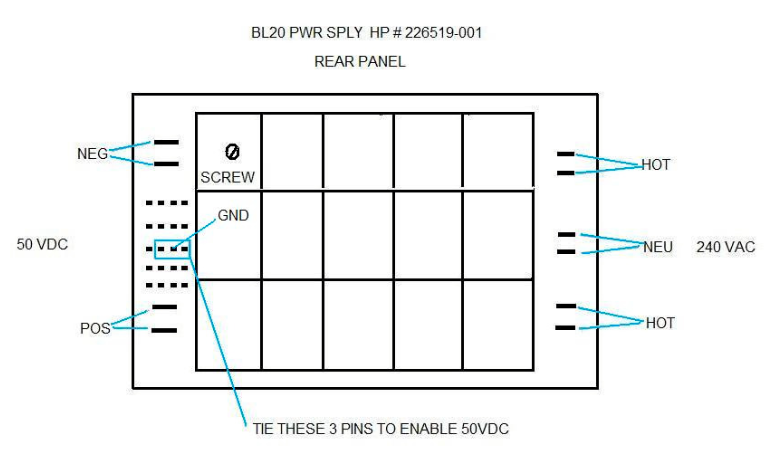
When I purchased the amp I was also very fortunate to get the original J2 and RF cables! This made getting the amp on the air hundreds of times easier.
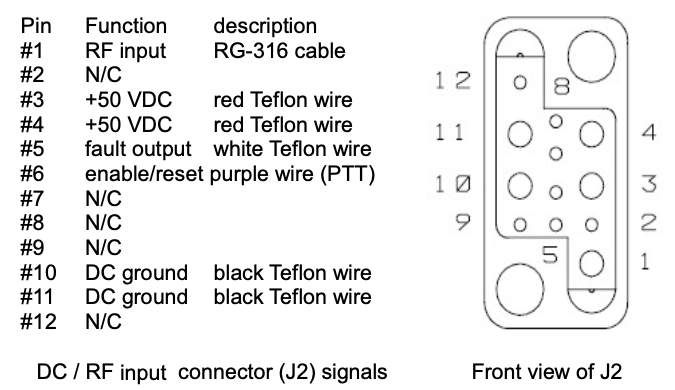
This amp will put out over 1000W with just over 10w drive. It’s capable of putting out legal limit but I have no intentions of ever driving it that hard as the custom components are likely not replaceable and the these amps are becoming scarce.
For the moment I will be driving this amp with an Icom 7100. Because of the Icom overshoot on transmit I had to fabricate an attenuator to prevent the 7100 from overdriving the amp. I picked up a W6PQL attenuator board and mounted it to a piece of heat sink. I added two BNC connectors and it goes on the transmit side of the rf relays.
Attenuator for IC-7100
I have a lot of other plans for the amp. I am going to mount the amp in my rack and will make a custom front panel which will integrate the original status LEDs (see below) as well as a custom monitoring system.
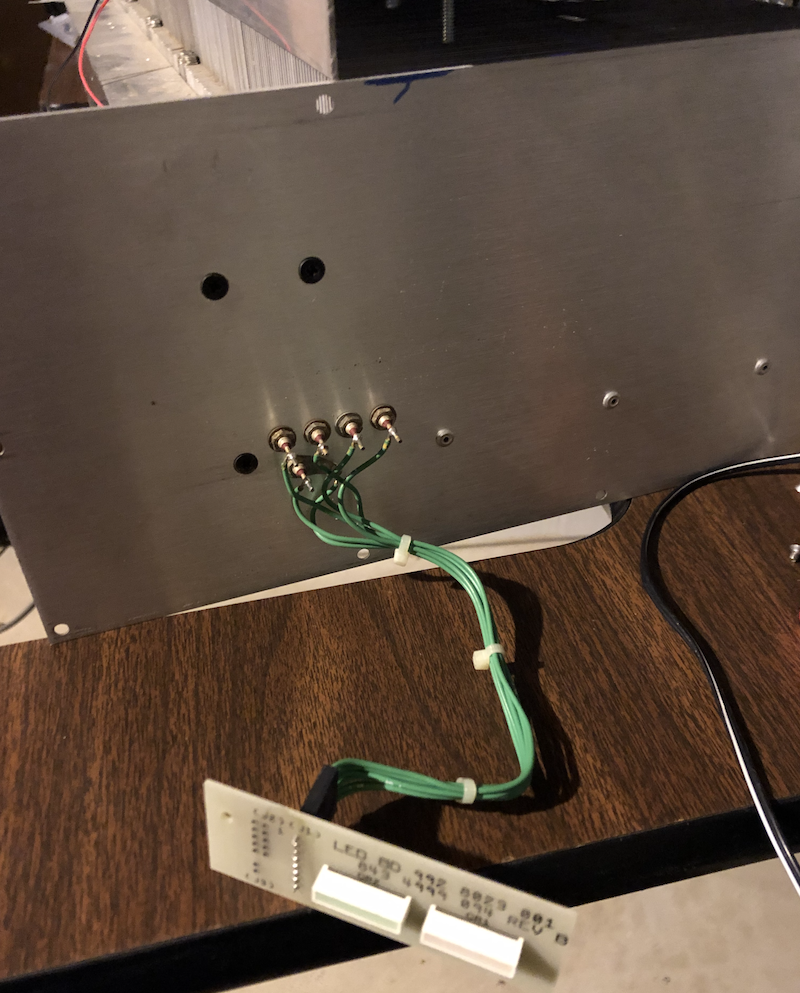
This monitoring system is based on an ESP8266. It has five DS18B20 temperature sensors mounted under each of the fans on the heatsinks. There is an LCD that displays the status of the amplifier and if a module is overheating. I don’t know what the normal operational temperature will be yet but there will be a caution threshold which will turn on a yellow LED and display which module has the issue. If the module exceeds a second threshold a red LED will light and the ptt from the IC-7100 will be disabled until the amplifier cools down. In addition to the local display the ESP8266 also reports into a Raspberry Pi which also monitors and controls other aspects of the radio station. This status console is available on any device that has a web browser. I may even integrate the Harris LED status into the console as well down the road.
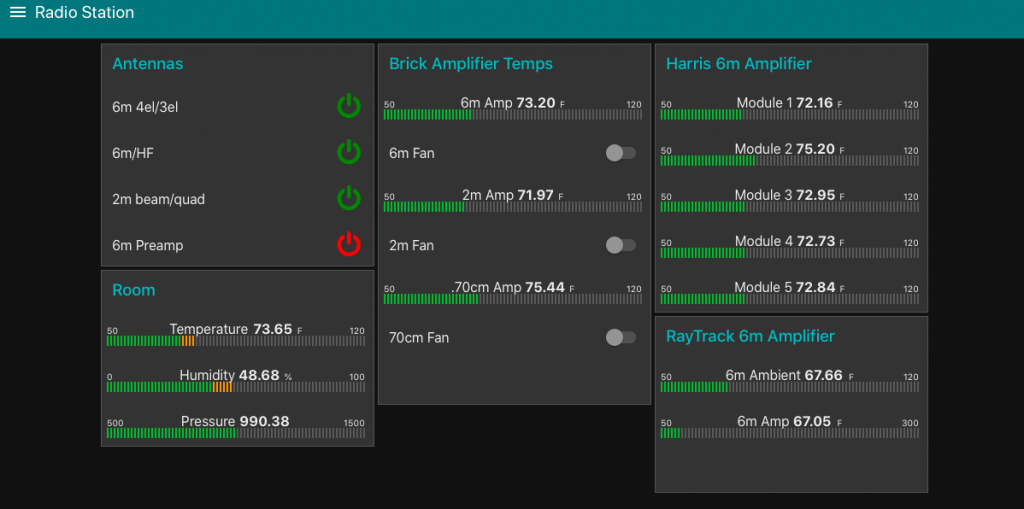
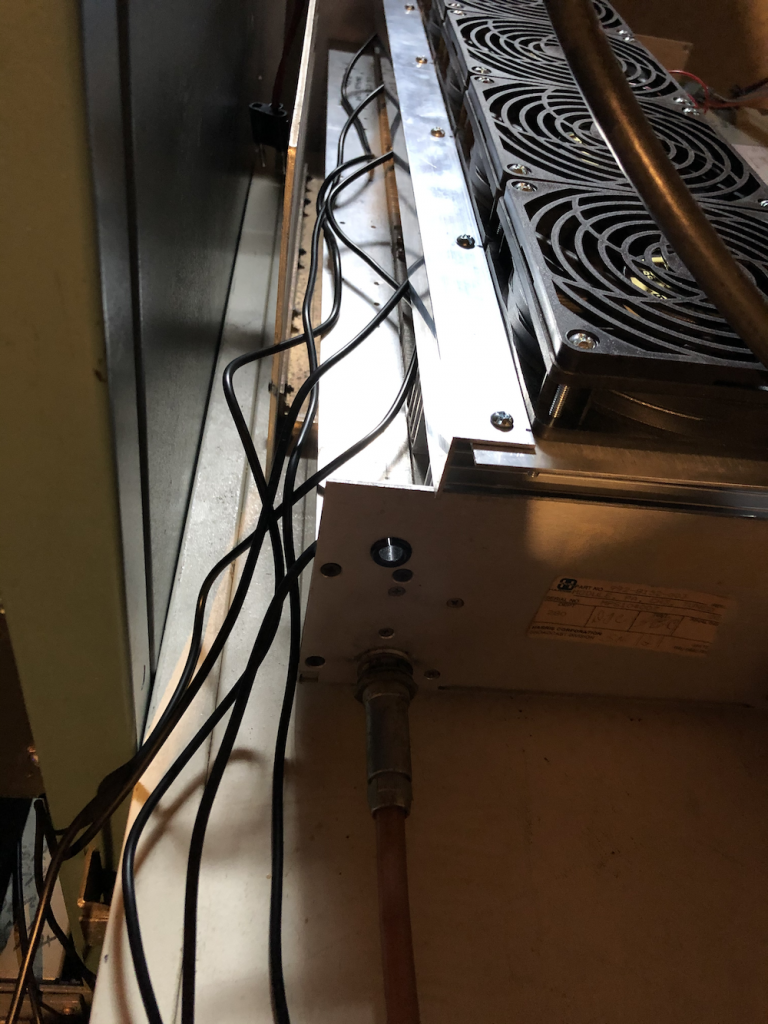
Update: the amp is up and running! There is a little house keeping to still be done and I’m going to get the front panel finished before putting it in the rack.
